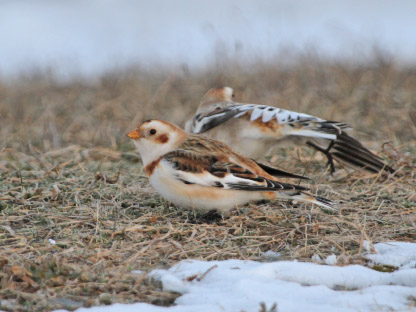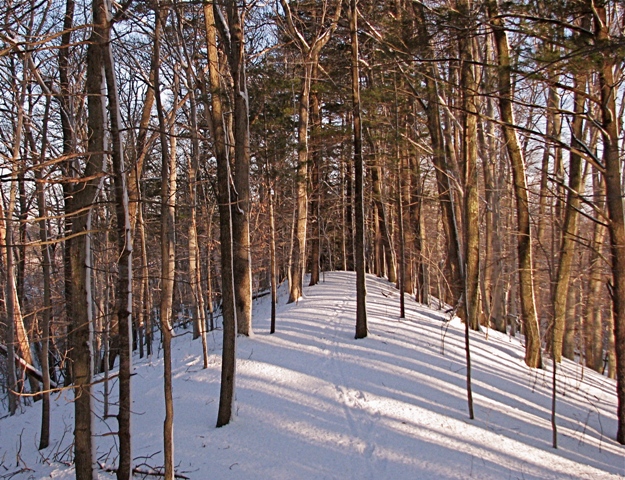 Snowy owls have been getting a lot of attention this season, mainly due to the large influx we are seeing in the Northeast.
Snowy owls have been getting a lot of attention this season, mainly due to the large influx we are seeing in the Northeast.
These owls aren’t the only birds that prefer the comparably mild Massachusetts winter over the extreme temps in the Arctic tundra. Snow buntings—sometimes known as the “snowflake”—also vacation here.
Feathers like Snow
At first glance, you might confuse a flock of snow buntings for a swirl of snowflakes. These birds are brown and white when they are in non-breeding plumage, and they have luminous white patches on their wings.
During the summer breeding season, the female snow bunting turns grayer, and the male is mostly black and white (think of a snowman studded with bits of coal). Amazingly, this species doesn’t grow new feathers to achieve this look. Instead, it rubs against snow until the brown feather tips are worn away, revealing the differently-colored feather bases.
A Northern Bird
Why do snow buntings come here for the winter? They’re actually escaping harsh weather in a place much farther north: the high Arctic. Up on the tundra, they spend the warmer months raising young. They build nests heavily lined with fur, grasses, and feathers, so their chicks will stay warm on the chilly, rocky terrain.
Once the breeding season is over, snow buntings leave the Arctic and its severe oncoming winter in favor of more hospitable lands, like the northern half of the United States. Here, you’ll find flocks foraging in open grassy areas like roadsides, farmers’ fields, and beaches, merrily searching for tasty seeds amongst drifts of snow.
A Bird in Trouble?
Some evidence suggests that the snow bunting population in North America may be declining sharply. Climate change and a host of resulting effects like changing amounts of snowfall may be altering this bird’s Arctic home. It’s another good reason to get serious about tackling the impacts of climate change.
Have you seen any “snowflake birds” in your neighborhood this year?
Photo courtesy of Dave Larson


